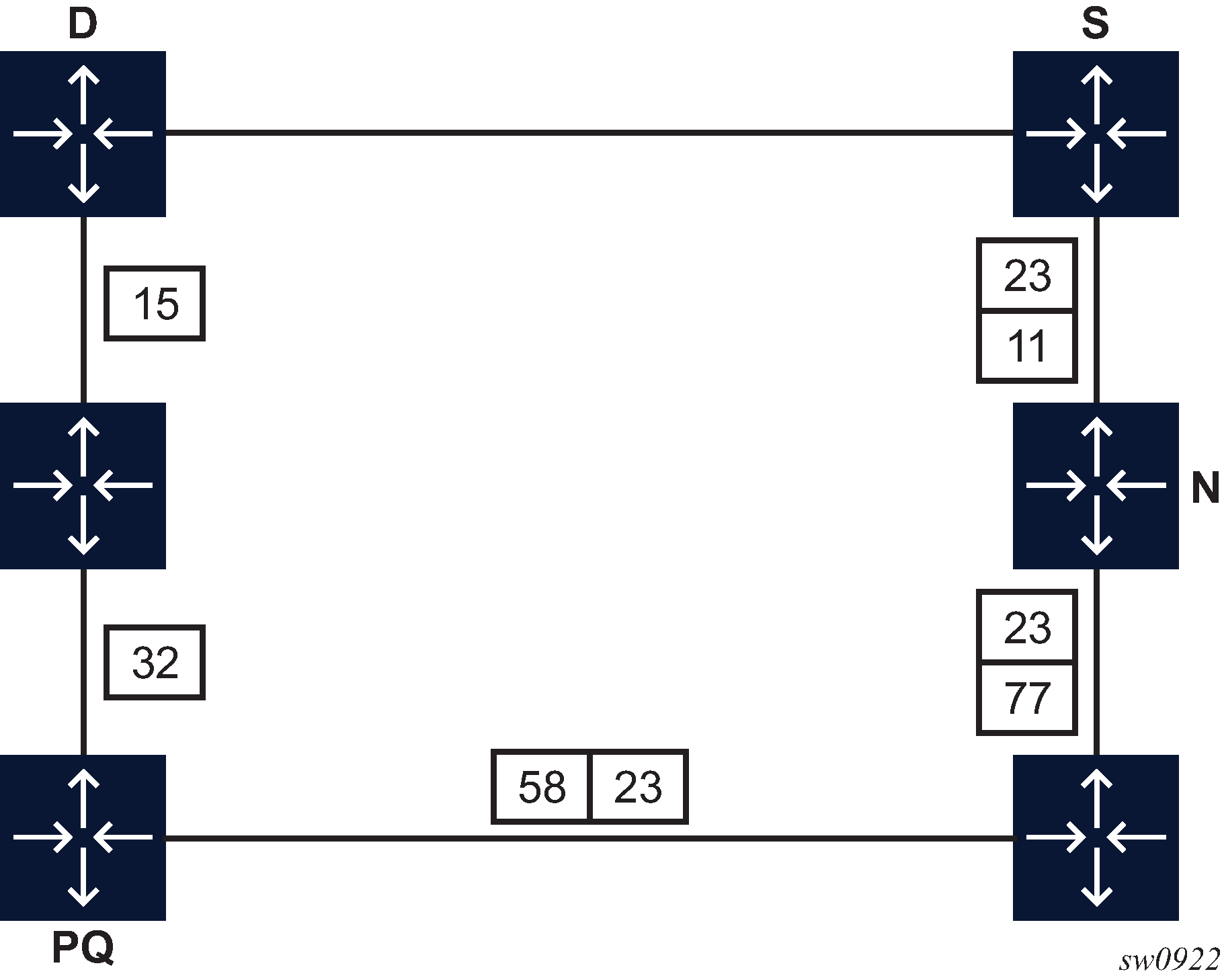LDP Remote LFA (rLFA) builds on the pre-existing capability to compute repair paths to a remote LFA node (or PQ node), which puts the packets onto the shortest path without looping them back to the node that forwarded them over the repair tunnel. See 7450 ESS, 7750 SR, 7950 XRS, and VSR Unicast Routing Protocols Guide section Remote LFA with Segment Routing for further information about rLFA computation. In SR OS, a repair tunnel can also be an SR tunnel, however this section describes an LDP-in-LDP tunnel.
-
config>router>isis>loopfree-alternates remote-lfa
-
config>router>ospf>loopfree-alternates remote-lfa
-
config>router>isis>loopfree-alternates augment-route-table
-
config>router>ospf>loopfree-alternates augment-route-table
These commands attach rLFA-specific information to route entries that are necessary for LDP to program repair tunnels toward the PQ node using a specific neighbor.
Finally, enable tunneling on both the PQ node and the source node using the following command:
config>router>ldp>targ-session>peer>tunneling
The following figure shows the general principles of LDP rLFA operation.

In the preceding figure, S is the source node and D is the destination node. The primary path is the direct link between S and D. The rLFA algorithm has determined the PQ node. In the event of a failure between S and D, for traffic not to loopback to S, the traffic must be sent directly to the PQ node. An LDP targeted session is required between PQ and S. Over that T-LDP session, the PQ node advertises label 23 for FEC D. All other labels are link LDP bindings, which allow traffic to reach the PQ node. On S, LDP creates an NHLFE that has two labels, where label 23 is the inner label. Label 23 is tunneled up to the PQ node, which then forwards traffic on the shortest path to D.